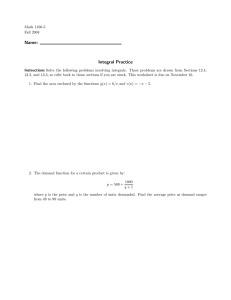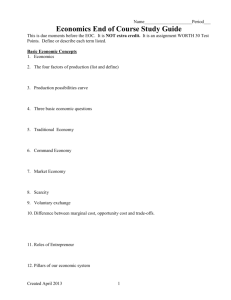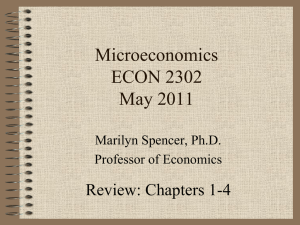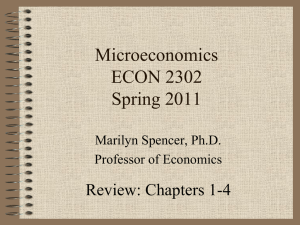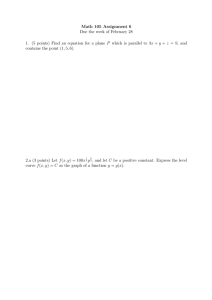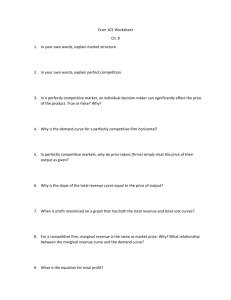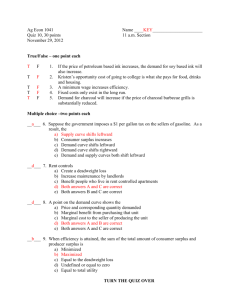Economic valuations and benefit transfer in ARIES
advertisement
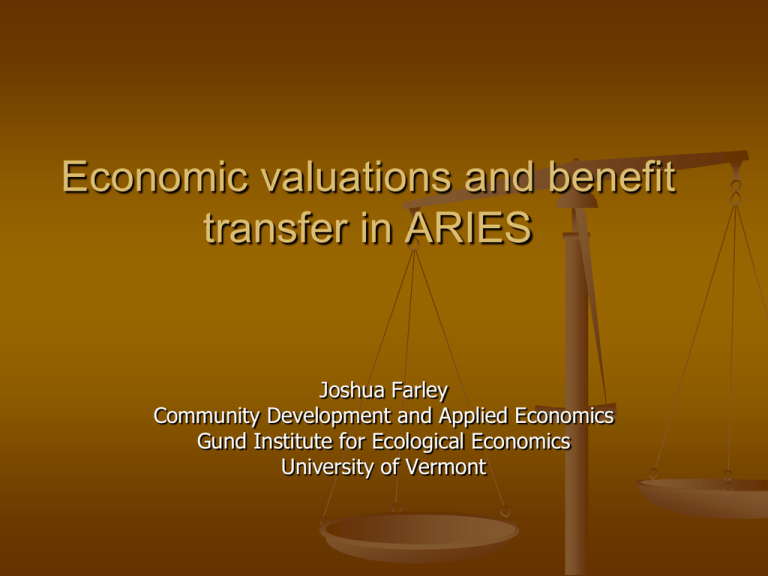
Economic valuations and benefit transfer in ARIES Joshua Farley Community Development and Applied Economics Gund Institute for Ecological Economics University of Vermont Function of values and valuation A feedback signal, generally quantitative, that can help achieve a particular goal or goals Need to define goals before deciding correct approach to valuation Conventional economic goals Efficient allocation Rising MC= diminishing MB Maximize net present monetary value Market price = marginal value = MC = MB Determined by intersection of supply and demand Demand = preferences weighted by purchasing power One dollar, one vote. Plutocratic Economic Surplus Price = marginal value Consumer surplus S 3.00 2.50 2.00 1.50 1.00 Producer surplus .50 0 1 2 3 4 5 6 7 D 8 9 10 Quantity Economic surplus = consumer surplus + producer surplus 11 12 Valuation Estimate market price of non-market ES Approximate marginal benefit for existing supply Provides feedback signal to decision makers’ efforts to supply amounts that maximize monetary values Major concerns Is maximizing monetary value appropriate goal? Incommensurability How much for your daughter? Marginal valuation, ecological and economic thresholds, uncertainty and ignorance Ignores future generations Ecological economics goals Desirable scale Just distribution How much natural capital should be allocated towards economic production, how much should be left intact to generate ecosystem services? Accounts for future generations Who is entitled to natural capital and economic production? Allocation of shared inheritance should not be determined by existing purchasing power Efficient allocation Maximize ratio of economic services gained ES services lost ARIES approach Quantitative estimates of flows of known valuable services from ecosystem to beneficiaries Value of non-rival ES = sum of marginal values across all beneficiaries Value of rival ES = highest marginal value to single beneficiary Not all in same units. Addresses incommensurability Accounts for spatial distribution of different services ARIES approach User can choose weights for different services User can choose weights for different beneficiaries Imposes commensurability, but transparent Just distribution Monetary values one option Sustainable Scale: Critical Natural Capital Components of natural capital that are essential to human survival and for which there are no adequate substitutes Small changes in quantity lead to large changes in value Serious challenge for benefits transfer Ecological or economic threshold The Demand Curve for Natural Capital Region 1 E.g. forests in Vermont Far from threshold, slow rate of change, errors less important Price can determine conservation needs Benefits transfer less risky Monetary predictors Ecological or economic threshold The Demand Curve for Natural Capital Region II E.g. Puget Sound Estimated price sensitive to small quantity changes and small errors Biophysical predictors of value more robust Knowledge of thresholds and other ecological criteria may be more relevant than price Benefits transfer highly questionable Can we transfer knowledge of thresholds? Scale should determine price Prices adjust to conservation constraints much more rapidly than ecosystems adjust to prices. Ecological or economic threshold The Demand Curve for Natural Capital Biophysical predictors, focus on conservation Desirable scale Price Region III E.g. Madagascar Finance more important than valuation Should focus on supply curve, not demand curve Willingess to pay is critical, but poor measure of actual values Supply curve downward sloping What is most cost effective way to restore critical natural capital? ARIES can trace flows of damages and benefits, help combine polluter pays principle, beneficiary pays principle Ecological or economic threshold The Demand Curve for Natural Capital Biophysical predictors, focus on restoration, finance Monetary Values Ecological or economic threshold The Demand Curve for Natural Capital Scale determines price Finance more important than valuation
